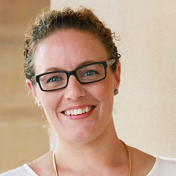Diversity needs flexibility
Northrop’s Karlie Collis knows that understanding diversity issues begins with understanding your people.

In tackling diversity, it’s important to look at its many facets. If we drill down into why diversity has eluded engineering for so long, we need to address factors like unconscious bias, communication styles, cultural differences and a lack of role models, among others.
Flexibility in working arrangements is just one of many areas where it’s possible to create some great success stories in our industry.
The Workplace Gender Equality Agency (WGEA) report ‘A strategy for inclusiveness, well-being and diversity in engineering workplaces’ highlights the problems in this area. It states that work-life balance “...is a critical issue and has been consistently rated among the top issues for women in engineering (81.2% in the Engineers Australia 2012 survey)”. However, the “Engineers Australia’s 2012 survey showed that nearly 90% of employers provided some flexible work arrangements…but that the take-up of these arrangements continued to be low”.
Why is this so? Are our flexible work arrangements workable, or are there barriers (perceived or real) that prevent their take-up?
Avoid the trap
The introduction of diversity policies alone won’t solve the problems. And this seems to be the biggest trap for engineering firms.
Northrop has a diversity group that addresses issues and involves employees from varying roles within the company. The team’s recent focus was flexible work arrangements. Although we had a plethora of options available to employees seeking flexible hours, we wanted to understand how these conditions were perceived internally.
We needed to be confident that we weren’t just paying lip service to our employees – that our offerings were sufficient, accepted, and understood. It was also important to discover if there were unwritten rules that affected employee decisions. For example, did pressure from peers or management prevent take-up, through concern it might negatively harm career prospects?
You can have all the policies, vision statements and management training modules in the world, but if your people don’t believe in them, you’ll have an uphill battle ahead. So how will you know if your employees fall into the 81% that still feel they have unsuitable work-life balance?
Know your people
Northrop wanted to bring a humanised learning tool to its people to help find some answers. We collated several written ‘profiles’ from employees who utilised flexible work arrangements. They were asked to highlight both the successes and failures of their experience which we shared through workshop format with a panel discussion from external peers within the industry. The discussion was frank, many eyes were opened, and there was a collective feeling that we had made significant progress in this area.
Nicole Sutherland has been working with Northrop for over ten years and in this time has had two boys. She’s a senior civil engineer working part time. Nicole found that by spreading her hours over five days worked best for her. “I make myself available and flexible throughout the week by spreading my part time hours Monday to Friday. This ensures my clients and work colleagues can contact me when they need and I can get what they need done when I have time”
The key to the day’s success was an open conversation, and multi-faceted perspective – noting that this is not just a women’s issue.
In addition to our diversity group, Northrop conducts a regular external employee survey. Respondents are assured of anonymity, and questions are carefully fashioned to provide maximum insight into potential issues. We use the survey in conjunction with face-to-face meetings and working groups to gain a better understanding of employees’ attitudes and perception.
Use the resources available
Consult Australia, Engineers Australia and WGEA all have an immense collection of resources to assist your organisation in addressing diversity. Another resource often overlooked is industry peers. What insights or resources could they provide to assist you?
Nicole looks for opportunities to mentor aspiring young female engineers within Northrop. By communicating with others how it’s worked for her will ensure our people understand and take up what is on offer to them. “Females are inspired at my success of working part time hours and therefore can see a future for themselves at Northrop. It’s not without its challenges though. Some clients don’t want to work for part time employees. It’s about making sure you are surrounded by a team that is willing to provide the level of support that you require”.
Ultimately it’s about our people. Many flaws in policies that have been put together for minority groups are a result of not seeking input from the group in question. The conditions for flexibility in working arrangements should be continually re-assessed and reworked to ensure their suitability.
If you’re conducting internal workshops or surveys, an obvious solution is to collate and analyse the data. Read, re-read and make every effort to understand the background behind the diversity statistics you are providing to the WGEA each year. As a final comment, l would like to emphasise how important it is to revisit and reinforce the WHY of diversity. It will only be once the WHY is fully understood and appreciated that we can start to address the HOW.
Article published in June 2017 issue of Consulting Matters

